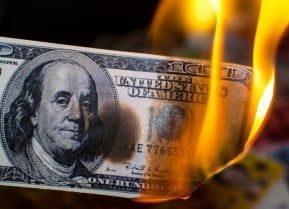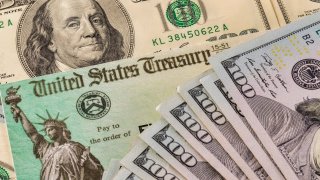Is the Federal Reserve Fighting the Last War?
By ignoring signs of a future significant deceleration in inflation coming from an unprecedented decline in the broad money supply, serious trouble in the commercial property sector and at the regional banks, and Chinese deflationary pressure, the Fed seems to be setting us up for a hard economic landing.
It is often said that generals tend to fight the last war. Something similar might be said of Jerome Powell’s Federal Reserve. At a time when both domestic and external factors point to the deceleration of inflation to below the Fed’s 2 percent inflation target, the Fed is sticking to its high interest rates to regain inflation control.
The Fed’s inappropriately hawkish monetary policy stance risks inviting real financial system strains and a hard economic landing.
Over the past two years, the Fed adopted an unusually aggressive monetary policy in response to inflation’s surge to 9.1 percent in June 2022. Not only did it raise interest rates by 5.25 percentage points, representing the fastest interest rate hiking cycle in the postwar period, but it also shrunk its balance sheet by over $1 trillion by not rolling over the maturing Treasury bonds and mortgage-backed securities. The net result of these policies has been a contraction in the broad money supply (M2) for the first time since the Fed started publishing this data in 1959.
While the shift to aggressive monetary policy tightening might have been appropriate at its start in March 2022 when inflation was raging, it is highly questionable whether its maintenance is correct today. It is not simply that the economy is slowing, and inflation has come down steadily towards the Fed’s inflation target. There are clear signs of a slow-motion commercial real estate train wreck that could upend the financial system in general and the regional banks in particular. There is also a high risk that China will soon be exporting deflation to the rest of the world.
The fundamental problem in the United States, Europe, and the United Kingdom’s commercial property market is the marked change in work and shopping habits following the pandemic. In the post-Covid world, employers are tolerating a large proportion of their workforce working at least part of the week from home while households are now doing an increasing amount of shopping online. The net result has been a surge in unoccupied office space and plunging real commercial property prices. Morgan Stanley estimates that office property prices could decline by as much as 40 percent from their pre-Covid highs. This means that around $1.2 trillion in U.S. commercial property value could evaporate, and lenders could take a big hit.
The commercial property crisis could exert strong deflationary pressure on the economy by causing the failure of many small and medium-sized banks. A recent National Bureau of Economic Research study underlines this point by estimating that as many as 385 US regional banks could fail as a result of commercial property loan defaults. If that were to occur, we must expect a further considerable tightening in lending standards. That by itself could tip the economy into recession.
While trouble in the domestic financial system is brewing, China, the world’s second-largest economy and, until recently, its main engine of economic growth, is stumbling and experiencing deflation. The bursting of its epic-sized housing and credit market bubble is leading to falling house prices and a wave of property developer loan defaults. At the same time, investor confidence is evaporating as a result of the government’s heavy-handed approach to the tech sector, its mishandling of the COVID-19 pandemic, and its suppression of economic data and economic commentary. The Chinese stock market is on the ropes and, over the past year, has been the world’s worst-performing major stock market.
China is the world’s largest exporter and consumer of internationally traded commodities. This means it can potentially export a considerable amount of deflationary pressure to the rest of the world economy. Chinese deflation, coupled with a weaker Chinese currency, must be expected to lead to significantly lower import prices for the rest of the world. At the same time, a weaker Chinese economy must be expected to lead to lower international energy and food prices.
In early 2008, the Federal Reserve downplayed problems in the subprime loan and housing markets. It did so only to find that the economy succumbed to its worst postwar recession. Today, it seems that the Federal Reserve is making a similar mistake. It is doing so by ignoring signs of a future significant deceleration in inflation coming from an unprecedented decline in the broad money supply, serious trouble in the commercial property sector and at the regional banks, and Chinese deflationary pressure. In the process, the Fed seems to be setting us up for a hard economic landing before year-end.
Desmond Lachman is a senior fellow at the American Enterprise Institute. He was a deputy director in the International Monetary Fund’s Policy Development and Review Department and the chief emerging market economic strategist at Salomon Smith Barney.
Image: Shutterstock.


